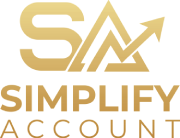Payroll reports are essential tools for Australian businesses to manage labor costs effectively. They provide a clear view of employee wages, taxes, deductions, and other relevant information, aiding in tracking expenses, ensuring legal compliance, and managing finances efficiently.

Types of Payroll Reports
- Weekly Reports: These reports track labor expenses and productivity on a weekly basis, also helping businesses stay in control of their costs.
- Fortnightly and Monthly Reports: Offering a comprehensive overview of labor expenses, these reports are generated every two weeks and monthly, respectively.
- Quarterly and Annual Reports: Providing insights into financial performance, these reports offer snapshots of spending for the previous quarter and are essential for tax purposes.
How Payroll Reports Work
Payroll reports can be generated manually or through software like QuickBooks Payroll, which simplifies payroll management by automating processes and ensuring accuracy in ATO submissions.
Conclusion
Australian businesses rely on payroll reports to manage labor costs and ensure legal compliance. Moreover regularly generating and analyzing these reports streamlines payroll processes and enhances financial management.
Q&A Section
Q1: What is the importance of payroll reports?
They help businesses manage labor costs, ensure legal compliance, and provide documentation for tax purposes.
Q2: How often should payroll reports be generated?
Generate them weekly, fortnightly, monthly, quarterly, or annually, depending on the business’s payroll schedule.
Q3: How can businesses simplify payroll reporting?
Businesses can simplify payroll reporting by using software like QuickBooks Payroll, which automates the process and ensures accuracy.
Understanding Certified Payroll and Compliance
What is Certified Payroll?
Firstly Contractors on federally funded projects use certified payroll, ensuring workers receive prevailing wages. Hence contractors must submit detailed reports to the U.S. Department of Labor.
Completing Certified Payroll Requirements
To complete certified payroll requirements, employers must submit Form WH-347 to the Department of Labor, therefore providing detailed information about employees, wages, and hours worked.
Understanding Prevailing Wage
The prevailing wage ensures that hourly workers are paid fairly for work on government projects, in addition with rates determined by states.
Penalties for Non-Compliance
Non-compliance with certified payroll requirements can lead to fines or termination as a government contractor, thus highlighting the importance of accurate reporting.
Conclusion
Furthermore Certified payroll is complex and requires careful management to avoid penalties, emphasizing the need for compliance and accuracy in reporting.
Want to learn more about Payroll? Click here.
Q&A Section
Q1: Who submits certified payroll reports for leased employees?
Firstly the need to submit certified payroll reports for leased employees may vary based on the service agreement with the vendor.
Q2: What should businesses do if they have questions about certified payroll?
Businesses should reach out to a local PEO or service provider for assistance with certified payroll.
Q3: How can businesses avoid unnecessary fines and penalties related to certified payroll?
Businesses should work with a local PEO to ensure compliance with certified payroll requirements and also avoid penalties.


